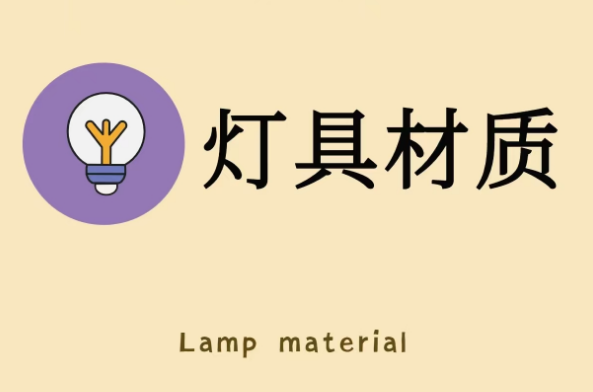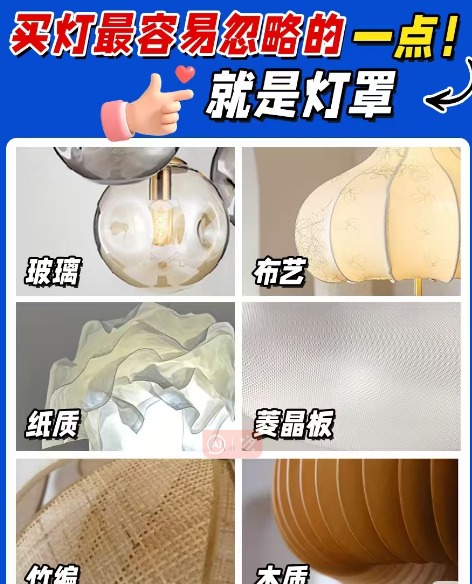From three years to a lifetime, the underlying battle between lamp warranties lies in a silent struggle between material science, process standards, and business strategy.
When consumers purchase lamps, dazzling design and advanced smart features often dominate the focus, while the "X-year Warranty" tucked away in the corner of the product label is often overlooked. Little do they realize this tiny print represents a brand's solemn promise of product durability, and the core underlying this promise lies in the lamp's material selection and craftsmanship. In the lighting industry, a warranty period is more than just a random number; it represents a rigorous endorsement of material performance, manufacturing processes, and long-term reliability.

Chapter 1: Warranty Period—The "Time Commitment" of Lamp Quality
A warranty period is essentially a brand's risk management statement. It clearly informs consumers: Under normal use, the brand promises to provide free repair or replacement service for specific faults (usually defects in materials or workmanship) for a specific period. As a product that combines electrical safety with decorative features, the length of a lamp's warranty directly reflects the brand's confidence in the following aspects:

Material durability: Can it withstand light aging, oxidation corrosion, and thermal expansion and contraction?
Structural stability: Will it deform or crack from long-term hanging or support?
Electrical safety: Will the insulation performance degrade over time? Are the wiring connections reliable?
Process reliability: Can the welding, bonding, and plating points withstand the test of time?

Industry Overview: Warranty Periods Vary Vastly
Economy Lamps (Mainly Plastic): Generally 1-3 Years
Mid-Range Lamps (Metal + Acrylic/Glass): Typically 3-5 Years
High-End Decorative Lamps (Copper/Stainless Steel/Crystal/Solid Wood): Up to 5-10 Years
Professional Engineering Lamps (Aluminum Die-Cast/Specialty Alloys): Some Offer 5-10 Years or Even Longer
LED Light Source Modules: Independent Warranty, Typically 3-5 Years (Some High-End Brands Offer Up to 100,000 Hours)
Intelligent Drive/Control Systems: Typically 2-5 Years (Due to Rapid Technology Updates)
"Warranty Period" ≠ "Lifespan"! The warranty period represents the brand's liability period, while the actual lifespan often far exceeds the warranty period. However, an extended warranty (e.g., 8 or 10 years) demonstrates the brand's confidence in its materials and craftsmanship.
Chapter 2: Material Decoding - The "Lifespan" and Warranty Logic of Different Materials
The material selection for a lamp's "skeleton" and "skin"—that is, its structural components and exterior components—fundamentally determines its ability to withstand environmental corrosion and mechanical stress, and is the core basis for its warranty period.
A. Metal: The "Backbone" of the Lamp, the Cornerstone of the Warranty Period
Metal forms the core support structure and electrical conductivity of a lamp. Its grade and treatment process are key factors in determining warranty tiers.
Mild-carbon steel (wrought iron):
Characteristics: Low cost and easy to shape, but susceptibility to rust is a critical drawback.
Warranty implications: Even with a painted or powder-coated surface, the risk of rust is extremely high in humid, salt-sprayed environments (such as those in coastal areas). Warranty periods typically do not exceed three years. Brands often exclude liability for "surface oxidation and rust" in their warranty terms.
Case study: A Nordic-style wrought iron chandelier developed rust spots after two years of use in a southern city. The brand denied warranty coverage, claiming it was "caused by environmental factors, not a material defect."
Aluminum alloy:
Characteristics: Lightweight, excellent thermal conductivity, and naturally resistant to oxidation (a dense oxide film forms on the surface). Extruded aluminum profiles offer high strength, while die-cast aluminum allows for complex shapes.
Warranty implications: It is the primary material for mid- to high-end lamps. Surface anodizing (for enhanced hardness, corrosion resistance, and colorability) or electrophoretic treatment can significantly enhance performance. Warranty periods can reach 5-8 years.
Technologically advanced: High-end brands utilize aircraft-grade aluminum (such as 6061-T6) and utilize a multi-stage anodizing process. They offer a 10-year warranty, specifically guaranteeing structural integrity and corrosion resistance.

Stainless Steel (304/316L):
Features: Top-tier corrosion resistance, especially 316L containing molybdenum, which resists chloride corrosion (suitable for coastal areas, swimming pools, and bathrooms). High strength and a cool, sophisticated look.
Warranty Considerations: Costly, primarily used in high-end, outdoor, and harsh-environment lighting. Warranties typically extend from 8-10 years or even longer, demonstrating the brand's confidence in the material's inherent corrosion resistance.
Warranty Considerations: Be wary of counterfeit "stainless steel" (low-quality alloys), which are prone to rust and void warranties.
Copper (Brass, Copper):
Features: Naturally antibacterial, classic and luxurious, and excellent electrical conductivity. Susceptibility to oxidation and darkening (forming a patina) is characteristic, but not a defect.
Warranty Considerations: Preferred for high-end decorative lighting. Warranty Focus:
Plating Quality: Adhesion, wear resistance, and corrosion resistance of the chrome/nickel/gold plating. Low-quality plating is prone to flaking and blistering. Warranties typically cover plating peeling (not natural oxidation).
Structural Strength: Ensures reliable welds/connections.
High-End Guarantee: Top brands utilize solid cast brass with a multi-layer electroplating process (e.g., copper base, nickel layer, and chrome layer), guaranteeing a 5-10 year warranty against abnormal plating peeling and corrosion penetration of the base material.
B. Non-Metallic Materials: The "appearance" and "surface" of a lighting fixture have a profound impact. The material of the lampshade and decorative components determines light transmittance, aesthetics, and environmental resistance.
Engineering Plastics (PC, PMMA, ABS):
Characteristics and Warranty Correlation:
PC (Polycarbonate): High impact resistance ("bullet-proof glass" grade), heat resistance, and excellent flame retardancy. It's the preferred choice for reflectors and lenses in high-end downlights and spotlights. Warranties can reach 5 years or more (with emphasis on ensuring no significant loss of light transmittance, deformation, or embrittlement).
PMMA (Acrylic): High light transmittance, excellent gloss, and easy processing. Scratch-prone, some grades yellow easily (especially when exposed to UV and high temperatures). The warranty period is typically 3-5 years, but explicitly excludes minor scratches caused by normal use and yellowing due to improper environment or cleaning.
ABS: Low cost and easy to form. Poor strength, weather resistance, and temperature resistance, prone to aging, brittleness, and discoloration with long-term use. The warranty period is typically 1-3 years.
Technological Upgrades: Modified plastics with the addition of UV and anti-yellowing agents can significantly extend their lifespan, supporting longer warranties.
Glass:
Characteristics and Warranty Correlation:
Ordinary glass: Low cost, fragile, and heavy. The warranty generally only covers natural breakage not caused by external forces (rare), and the warranty period is short.
Tempered glass: High strength (4-5 times that of ordinary glass), shatters into granular pieces, minimizing damage. It is a popular material for lampshades and safety protection. The warranty period is approximately 5 years, and it is guaranteed not to explode without external force (the spontaneous explosion rate is based on industry standards).
Crystal glass (lead crystal): High refractive index, brilliant effect. Quality assurance focuses on purity, cutting craftsmanship, and the reliability of metal fitting connections. High-end brands offer a 5-10 year warranty, guaranteeing the absence of serious air bubbles or impurities, and the risk of falling due to broken connectors.
Fabric/Paper Lampshades:
Characteristics: Creates a soft and warm atmosphere, but is prone to dust accumulation, difficult to clean, flammable (requires flame retardant treatment), and prone to fading and aging.
Warranty Relevance: The warranty period is typically short (1-3 years) and explicitly excludes fading, aging, and stains caused by cleaning, light, and the environment. Warranty coverage focuses on issues such as loosening of structural seams/bonds and failure of the flame retardant coating.
Natural Materials (solid wood, bamboo, rattan):
Characteristics: Warm and natural, but susceptible to deformation, cracking, and fading due to humidity and temperature.
Warranty Relevance: The warranty focuses on the stability of the structural connections and the effectiveness of the insect repellent treatment. Brands often disclaim liability or offer a very short warranty (1-2 years) for natural deformation, cracking, and fading. High-end treatments (such as stabilization and multi-layer eco-friendly paint) can extend the warranty to 3-5 years.
C. Surface Treatment: Material "Armor," Warranty "Amplifier"
The same substrate, with different surface treatments, can result in vastly different lifespans and warranties!
Spray Coating (Paint): Low cost and rich colors. However, adhesion, wear resistance, and weather resistance are poor, making it susceptible to scratching, flaking, and chalking. Warranties are short, and cosmetic issues are often dismissed.
Powder Coating: Environmentally friendly, offers a thick coating, strong adhesion, and superior wear and corrosion resistance to paint. It is the mainstream process for metal lamps. Consistently high-quality products can carry a 5-year warranty (guaranteed to prevent flaking and blistering).
Anodizing (Aluminum Only): An electrochemical process that creates a hard, dense, and corrosion-resistant oxide film on the aluminum surface, allowing for dyeing. Significantly improving aluminum performance is key to a long warranty (5-10 years). The film thickness grade (AA10, AA15, AA20+) underpins this warranty.
Electroplating (copper/iron/zinc alloy): A protective metal layer (chrome, nickel, gold, etc.) is applied. Coating thickness, adhesion, porosity, and corrosion resistance (such as the number of hours in salt spray testing) directly determine the length and scope of the warranty. Poor-quality electroplating is prone to exposure, blistering, and flaking. High-end products require multiple layers of electroplating combined with rigorous QC, guaranteeing an 8-10-year warranty against abnormal flaking.
PVD (Physical Vapor Deposition): A vacuum coating technology that produces thinner, harder, more wear-resistant coatings with longer-lasting, stable colors (such as gunmetal black, champagne gold, and rose gold). This technology, while extremely expensive, is used in top-tier lamps and is the core technology behind their extended warranties (10+ years) and guaranteed color.
Chapter 3: The "Devil's Details" in Warranty Terms and Material Traps
The "X Years" on the warranty card is just the beginning; the restrictive clauses related to materials are key!
The "Warranty Coverage" Trap:
Only covers "material and workmanship defects": Natural aging (such as yellowing of plastics, metal oxidation), cosmetic wear (scratches, fading), and environmental damage (moisture, chemical corrosion, external forces) are not covered.
The independent warranty for the light source (LED module/bulb): This warranty is usually shorter than the lamp body, and the minimum required light decay (brightness drop) for warranty coverage is crucial!
The warranty for electronic components (drivers/intelligent modules) is even shorter: typically 2-3 years, due to rapid technological advancements.
The murky area of "material defects":
Rusting on wrought iron lamps: Is it a "material defect" or "environmental damage"? Brands tend to favor the latter.
Yellowing on acrylic lampshades: Is it a "workmanship defect (insufficient UV inhibitor)" or "normal aging/improper cleaning"? Consumers face difficulty proving this.
Cracking in solid wood lamps: Is it due to "improper wood drying" or "excessive humidity fluctuations in the operating environment"? The definition is complex.
"Use Environment" Exclusions:
Outdoor lamps: Doesn't meet the claimed IP rating for water and dust resistance? The warranty is void!
Bathroom lamps: Not installed in a dry area? Or exposed to abnormal moisture? The warranty may be void.
Coastal areas: High salt spray corrosion on metal is often classified as a "special environment," limiting the warranty.
The mystery of "repair vs. replacement":
High-end crystal lamps and complex art lamps can be extremely expensive to repair. Does the brand promise a replacement or only a repair? Are there high labor and parts fees?
What happens to discontinued models? Will they be replaced with a new product of equivalent value or refunded at a discount?
Chapter 4: Rights Protection Guide - Warranty Offense and Defense Strategies Based on Material
Knowledge + Evidence Preservation = The Cornerstone of Successful Rights Protection
Before Purchasing: Check the Materials and Read the Warranty Card!
Request a detailed description of the materials: Is it "aluminum alloy" or "high-quality aluminum alloy"? Is it "stainless steel" or "304 stainless steel"? Is it "PMMA" or "UV-resistant PMMA"?
Read the warranty terms verbatim: Focus on: Covered components (lamp body/light source/electronics), warranty coverage (what is covered and what is not), disclaimers (environmental/usage restrictions), repair/replacement policy, and required documentation.
Confirm the compatibility of materials with the warranty: For example, if an outdoor light claims a "10-year warranty," should the main body be 316L stainless steel or high-grade die-cast aluminum with a premium surface treatment? If not, the claim is questionable.
Use: Operate in a standardized manner and preserve evidence.
Installation and use strictly follow the instructions: Avoid overloading, illegal modifications, and use in an inappropriate environment.
Keep complete proof of purchase (invoice, order screenshots) and warranty card.
Take photos/videos regularly: Record the normal condition of the lamp, especially any problematic material areas (such as metal connections and shade transmittance).
In case of a problem: Obtain professional appraisal and defend your case.
Preliminary assessment: Is the problem within the warranty period? Does it fall within the warranty coverage? Does it violate any liability clauses?
Take photos and videos for evidence: Clearly record the problem symptoms, product labels (including model and serial numbers), and the overall installation environment.
Contact the brand's official customer service: Clearly describe the problem and provide evidence. Request a written communication record (email/work order).
Seek third-party testing (critical): When there is significant dispute regarding the cause of the problem (whether it is a material defect):
Metal rust/cracking: A metal materials testing agency can be commissioned to analyze the composition, metallographic structure, and cause of corrosion.
Plastic yellowing/brittle cracking: A polymer materials laboratory can be commissioned to test the degree of aging, UV inhibitor content, and compliance with standards.
Electroplating peeling: Check coating thickness, bonding strength, and salt spray test results to see if they meet standards.
Leverage regulatory oversight and public opinion: File complaints with the Consumer Association and market regulatory authorities; voice your concerns rationally on legal and compliant platforms.
Combined with big data analytics, brands can proactively warn of potential failures (such as poor heat dissipation leading to driver overheating or high humidity corroding metal). They can contact users before problems occur and provide maintenance recommendations or predictive services, upgrading passive warranty care to proactive care, enhancing user experience and brand trust. This opens the technical possibility for extended commitments like "lifetime warranties."
Expert Insight: The Triangular Relationship Between Materials, Warranties, and Consumer Trust
Gao Gong, an expert at the National Lighting Quality Supervision and Inspection Center, stated, "The warranty period is a comprehensive test of a brand's supply chain (material selection), manufacturing processes, and quality control system. Consumers should pay attention to whether the material description is clear and whether the warranty terms match the material grade. For example, claiming 'all-copper' but only offering a two-year warranty, or touting an 'extra-long warranty' but using inferior iron sheets with thin coatings, are both suspicious signals."
Ms. Zhang, CMO of a well-known high-end lighting brand, stated, "For high-end brands, an extra-long warranty (such as 10 years) isn't a cost burden, but rather a core pillar of brand premium. It forces us to carefully select aviation aluminum, 316L stainless steel, and top-grade optical PC from the source, and to invest in expensive processes like PVD and multi-layer plating. Every warranty extension is a profound test of our supply chain and manufacturing."
Veteran consumer rights lawyer Attorney Chen: "In lamp warranty disputes, material mismatch or defects are the core points of contention. Consumers should retain pre-purchase promotional evidence (webpage screenshots, brochures) and promptly secure evidence after a failure. When brands use 'environmental factors' or 'natural wear and tear' as excuses, third-party material testing reports are the most powerful weapon for legal protection. Courts generally accept the conclusions of professional institutions regarding whether materials meet standards and whether defects are due to workmanship."
Professor of Materials Science Dr. Wang: "The future development of lighting materials will be a dual-track approach of high performance and sustainability. New alloys, specialty engineering plastics, and nano-coating technologies will continue to push the boundaries of material performance, supporting even more extreme warranty commitments. Simultaneously, the mature application of recyclable and bio-based materials will drive the industry's evolution from 'long warranties' to 'green warranties' and 'responsible warranties,' enriching the meaning of warranties."

Conclusion: Behind the warranty period lies a wall of trust forged by the materials.
The seemingly simple numbers on a lighting warranty card reflect the meticulous control of molecular structure by materials engineers, the meticulous adherence to process parameters by manufacturers, and a weighty contract of long-term trust from the brand to consumers. When a lamp promises to illuminate your home for ten years, that promise isn't backed by marketing rhetoric, but by the carefully selected aluminum alloy base material deep within the lamp body, the nano-scale reinforced coating on the lampshade, and the flawless welds at the joints that have withstood salt spray testing. When purchasing a lamp, consumers should shift their focus from the dazzling lighting effects and take a minute to examine its "bones" and "skin"—understand the materials it's made of and understand the warranty that comes with it. Because, this warranty, printed in a corner, will silently protect the light and warmth of your home for years to come, bearing witness to the brand's unwavering commitment to quality and defining the boundaries of your rights. Behind the artistic world of light and shadow lies a durable legend written by material science, and the warranty period is the cover inscription of this legend.



